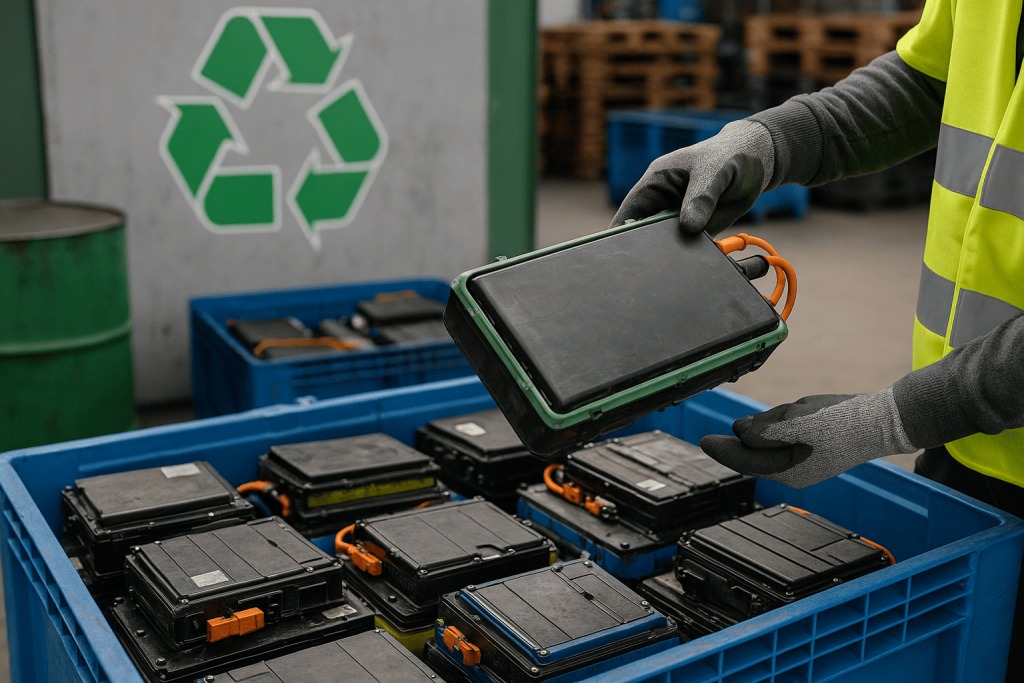As the electric vehicle (EV) revolution accelerates, so does a critical question: what happens to all those lithium-ion batteries when their automotive life ends? With millions of EVs hitting the road worldwide, their batteries—though long-lasting—will eventually degrade. Yet, instead of becoming waste, these energy-packed devices are gaining a promising second life. From smart reuse in stationary storage to innovative recycling technologies, the future of EV sustainability may depend as much on what happens *after* the drive as during it.
The Lifecycle Challenge: When “Dead” Isn’t Really Dead
EV batteries don’t suddenly die—they fade. After 8–15 years of use, a battery’s capacity may drop below 70–80%, making it insufficient for optimal driving range. However, these “retired” packs often retain ample energy storage potential for less demanding applications. This opens up opportunities for repurposing in home energy systems, grid storage, and even backup power for commercial buildings.
Reuse Before Recycle: Second-Life Applications
Repurposed EV batteries are already powering the future. Automotive giants like Nissan and BMW have launched second-life programs, installing used packs in residential solar storage and off-grid systems. In Amsterdam, retired batteries from Nissan Leafs store renewable energy for stadium lighting. In Japan, Toyota is using second-life batteries to stabilize electricity flow in shopping centers and telecommunications towers.
Even startups are entering the field, creating modular battery systems from salvaged EV cells. These systems provide affordable energy access in developing regions or temporary power at construction sites and festivals. Because the environmental impact of producing a new battery is high, reusing cells extends their value while delaying the need for energy-intensive recycling.
The Recycling Revolution: Breaking Down the Chemistry
When batteries are no longer viable—even for second-life use—they enter the recycling stream. But EV batteries are complex beasts, with layers of lithium, cobalt, nickel, graphite, and electrolytes, all encased in sophisticated electronics. The challenge is to recover these critical raw materials without emitting more carbon than the battery itself ever saved.
Emerging techniques are changing the game. Pyrometallurgy (smelting), while effective, consumes significant energy and burns off valuable components. Instead, hydrometallurgical and direct recycling processes are gaining favor. Companies like Redwood Materials, Li-Cycle, and Umicore now use aqueous solutions or mechanical separation to recover up to 95% of materials like lithium, cobalt, and nickel. These can be reintroduced into the battery supply chain—slashing the need for new mining.
Battery Passports and Traceability
As regulation tightens, the EU and other regions are introducing “battery passports”—digital identifiers tracking each battery’s material composition, origin, and carbon footprint. From 2027, all EV batteries in the EU will require a passport. This not only improves transparency but also helps recyclers sort and optimize processing methods. Blockchain solutions are also being explored to ensure ethical sourcing and end-of-life tracking.
Economic Opportunity and Circular Economy
The battery recycling and reuse sector is expected to become a multi-billion-dollar industry by the end of the decade. Governments and companies see this as a strategic investment, reducing dependence on imported critical materials and creating domestic jobs in battery dismantling, refurbishment, and chemistry innovation. China already recycles more lithium batteries than any other nation, while Europe and North America are racing to catch up with localized processing hubs.
Designing for Disassembly: Building Better Batteries
Another frontier is designing batteries with their end-of-life in mind. Engineers are now creating battery packs that are easier to dismantle, label, and disassemble, reducing recycling time and cost. Standardized cell formats, modular construction, and recyclable casings are all part of this shift. Automakers that prioritize disassembly-friendly designs will not only reduce environmental impact but also unlock new revenue streams in the circular economy.
Environmental Benefits and Global Impact
Recycling and reusing EV batteries drastically reduce the carbon footprint of the entire vehicle lifecycle. Instead of mining virgin lithium or shipping cobalt from conflict zones, manufacturers can close the loop. It also minimizes toxic waste: without proper disposal, battery chemicals can leach into soil and water. A well-managed second-life and recycling ecosystem ensures that EVs remain a truly sustainable alternative to fossil-fuel transport.
Challenges Ahead: Logistics, Safety, and Scale
Scaling second-life and recycling solutions isn’t simple. Transportation of used batteries involves strict safety regulations, while testing, disassembly, and repurposing require skilled labor. Additionally, many EV batteries are designed differently, complicating universal approaches. However, with AI-powered diagnostics, robotics, and automation, these obstacles are gradually being overcome.
Conclusion
The story of an EV battery doesn’t end at the last mile. With smart reuse and efficient recycling, its life can continue—powering homes, grids, and devices while reducing environmental strain. In this new era, a battery’s second act may be even more impactful than its first. As technologies mature and economies of scale kick in, battery reuse and recycling will become pillars of a truly sustainable electric vehicle ecosystem. In giving EV batteries a second life, we give the planet a second chance.



big eco win! scientists are beautiful👍👍
now, dat stuff only on paper.🙄🙄
still too slow & pricey👎
Hope they get that tech stuff sorted out.